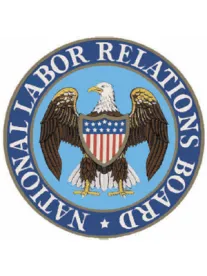As we have previously discussed, in its 2015 “Browning Ferris” decision, the National Labor Relations Board (NLRB) set a new standard for determining whether two entities are joint employers under federal labor law. Since then, employers have faced a rocky road in trying to understand the implications of this standard. Long-awaited guidance may finally be on the way.
The NLRB, Browning-Ferris, and other interested parties have just finished filing briefs relating to NLRB decisions announcing and applying the new joint employer standard. This is a critical case with potentially widespread impact for companies, including key decisions about how to structure their relationships with staffing companies, franchisees, vendors, and more. The matter is now in the hands of a District of Columbia federal court that will hopefully bring clarity to a very muddled issue.
To recap, Browning-Ferris (B-F) owns a waste recycling facility in California. It contracted with an entirely separate company, Leadpoint (LP), to staff certain functions at the recycling facility, and LP managed the HR issues for its employees. For example, B-F required that LP not pay its employees more than B-F employees who performed comparable work, and B-F and LP collaborated with respect to OSHA safety requirements. However, LP handled hiring, firing, training, scheduling, determining compensation, and administering benefits for its employees through LP’s own benefit plans and policies. LP also had its own administrative space at the B-F site, held meetings with its employees, and evaluated them based on LP’s standards.
The dispute arose because a union sought to hold an election that involved both B-F and LP employees, contending that the companies were joint employers. The NLRB regional director decided that they were not joint employers, finding that LP controlled its own employees and that B-F did not “share or co-determine” with LP important terms of the individuals’ employment.
The full NLRB decided differently however, holding that B-F and LP were joint employers because B-F supposedly had “indirect” or “reserved” control, meaning B-F could potentially exert control over important aspects of LP employees’ work terms and conditions, even if B-F did not actually exercise that control.
B-F contends that the NLRB completely changed, with no legal basis for doing so, a long-standing test for determining joint employer status that had required direct and immediate control over employees. Perhaps more important, B-F claims that the Board has now created confusion and ambiguity by treating limited and routine interaction with a vendor or contractor as if it was day-to-day control, such that companies will now operate in an “amorphous, unworkable fog.”
Hopefully, the court helps clear the fog, and soon. For example, the NLRB decision was not unanimous, and the dissent highlighted some practical problems with the “indirect” approach, including that companies often have many service providers. Are the companies all at risk to be characterized as joint employers for all the service providers’ employees? And how will joint employer status really be determined? The NLRB did not quantify the type or amount of indirect or reserved control, or the circumstances in which such control occurs, factors that may tip the scale against an employer as opposed to mere oversight or other activity that may not. How far can a franchisor, for example, set standards to protect its brand without crossing the line? Many issues are at stake.
Absent clear guidance about these and similar questions, companies are in the dark about how to structure vendor relationships to manage this risk and establish compliance. The court should take the opportunity to develop a clear standard to eliminate the uncertainty.




 />i
/>i

